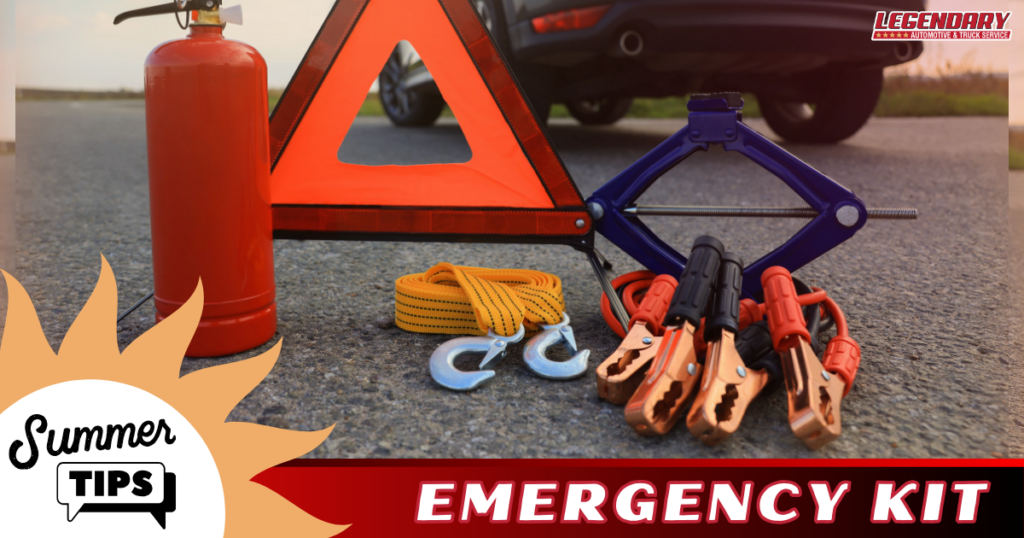SUMMER TIPS: EMERGENCY KIT

Having a well-stocked emergency kit is essential for unexpected situations on the road. Here’s a breakdown of what to include in your summer emergency kit:
Essentials for All Seasons:
Jumper Cables: A dead battery can leave you stranded anywhere. Jumper cables will allow you to get a boost from another car.
First-Aid Kit: Be prepared for minor injuries with a well-stocked first-aid kit, including bandages, antiseptic wipes, pain relievers, and any medications you or your passengers regularly take.
Flashlight and Extra Batteries: A flashlight is a must-have for any emergency kit. Include extra batteries to ensure you have light when needed.
Multipurpose Tool or Pocket Knife: A multipurpose tool or pocket knife can be helpful for various tasks, from tightening loose bolts to cutting rope.
Non-perishable Snacks and Bottled Water: Pack enough non-perishable snacks and bottled water to sustain yourself and your passengers for a few hours in case of an unexpected breakdown or delay.
Warning Signs (Optional): Road flares or reflective triangles can alert other drivers to your location in case of a breakdown on the road at night or during low visibility conditions.
Cell Phone Charger: A dead phone can be a major inconvenience in an emergency. A car charger or portable power bank will ensure you can stay connected.
Summer-Specific Items:
Sunscreen and Hats: Protect yourself from the sun’s harmful rays by including sunscreen and hats in your kit.
Insect Repellent: Bug bites can be unpleasant, especially on a road trip. Pack insect repellent to keep the bugs at bay.
Coolant: An extra bottle of coolant can be helpful in case of a leak or overflow. Consult your owner’s manual for the proper type of coolant for your car.
Windshield Wipers: Heavy summer rains can compromise visibility. Consider including a spare set of wiper blades in your kit, especially if yours are worn.
Emergency Blanket: An emergency blanket can help retain body heat in case of an unexpected breakdown in cooler temperatures.
Additional Tips:
Review and Revise: Take some time at the beginning of each summer to review your emergency kit and replace any expired items or replenish supplies that may have been used.
Consider Customization: These are general recommendations, you can customize your emergency kit based on your specific needs and driving habits. If you frequently travel with pets, include pet food and water in your kit.
Accessibility: Store your emergency kit in a readily accessible location in your car, such as the trunk or behind a seat.
By having a well-stocked emergency kit readily available, you can be prepared to handle unexpected situations that arise while driving this summer.
Remember, a little preparation can go a long way in ensuring a safe and enjoyable driving experience.






